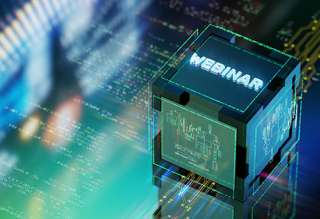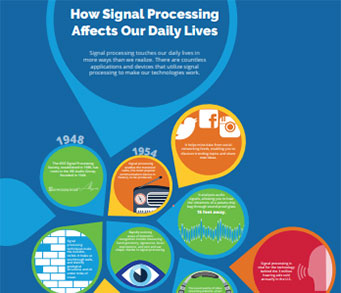SPS Feed
Top Reasons to Join SPS Today!
1. IEEE Signal Processing Magazine
2. Signal Processing Digital Library*
3. Inside Signal Processing Newsletter
4. SPS Resource Center
5. Career advancement & recognition
6. Discounts on conferences and publications
7. Professional networking
8. Communities for students, young professionals, and women
9. Volunteer opportunities
10. Coming soon! PDH/CEU credits
Click here to learn more.
The Latest News, Articles, and Events in Signal Processing
Date: 26 March 2024
Time: 11:00 AM ET (New York Time)
Presenter(s): Dr. Zhiguo Ding
Date: 13 March 2024
Time: 11:00 AM ET (New York Time)
Presenter(s): Dr. Rang Liu
Date: 29 February 2024
Time: 8:00 AM ET (New York Time)
Presenter(s): Dr. Qiuqiang Kong
Manuscript Due: 1 November 2024
Publication Date: March 2025
Date: 29 March 2024
Time: 8:00 AM ET (New York Time)
Presenter(s): Dr. Shashi Kant, Dr. José Mairton B. da Silva, Jr.
Date: 20-22 March 2024
Time: 9:00 AM ET (New York Time)
Presenter(s): Dr. Philippe Ciuciu
Location: Online

The school of Electrical, Information and Media Engineering,
Institute for High Frequency & Communication Technology (Head: Prof. Dr. Ullrich Pfeiffer), invites applications for a position as:
Research Assistant in the Field of 1-bit 3D Imaging
This position is to be filled as soon as possible for 3 years.

The school of Electrical, Information and Media Engineering,
Institute for High Frequency & Communication Technology (Head: Prof. Dr. Ullrich Pfeiffer), invites applications for
a position as
Research Assistant in the Field of Computational Time-of-Flight 3D Imaging
This position is to be filled as soon as possible for 3 years.
Date: 11 April 2024
Chapter: Oregon Chapter
Chapter Chair: Jinsub Kim
Title: Some Reflections on Distributed Optimization for Machine Learning: Beyond the Common Wisdom
Date: 22 February 2024
Time: 9:00 AM ET (New York Time)
Presenter(s): Dr. Abderrahim Halimi, Dr. Sandor Plosz,
Dr. Aurora Maccarone, Dr. Stephen McLaughlin,
Dr. Gerald S. Buller
Date: 5 March 2024
Chapter: Twin Cities Chapter
Chapter Chair: Tao Zhang
Title: Signal Processing and Deep Learning for Practical Active Noise Control
Pages
SPS Social Media
- IEEE SPS Facebook Page https://www.facebook.com/ieeeSPS
- IEEE SPS X Page https://x.com/IEEEsps
- IEEE SPS Instagram Page https://www.instagram.com/ieeesps/?hl=en
- IEEE SPS LinkedIn Page https://www.linkedin.com/company/ieeesps/
- IEEE SPS YouTube Channel https://www.youtube.com/ieeeSPS




















